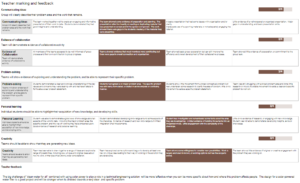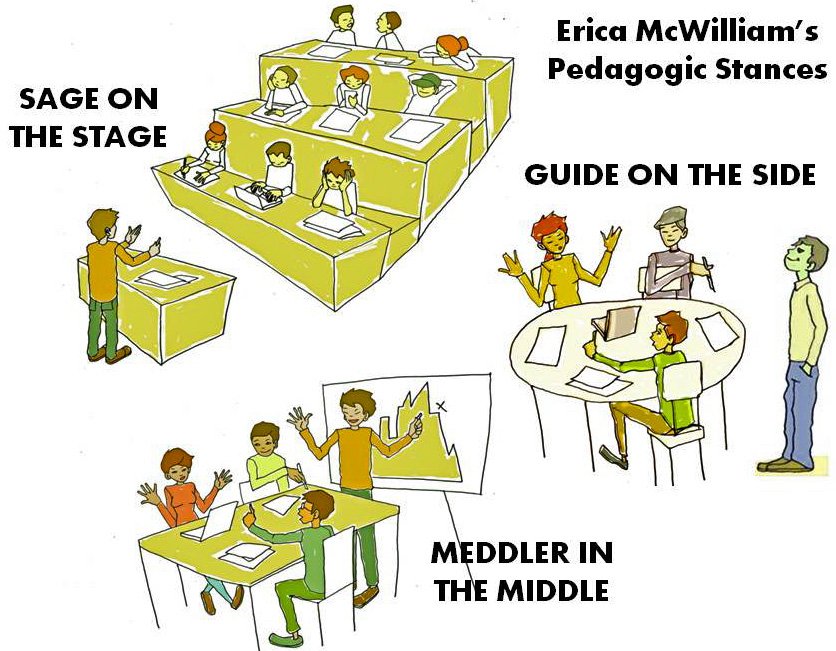The return to the classroom has been an interesting experience. I am in a fortunate situation to have high levels of autonomy and am unshackled from a specific curriculum as a determinant of the work students undertake. The key focus of the work is learner development – and that is geared towards personal shifts for each learner.
Term 1 presented a wide range of challenges due to COVID impacts, and regular timetabled conflicts (sporting carnivals, camps, public holidays, etc). The reality of this was that some learners only encountered me a handful of times throughout the Term. In retrospect, I saw some for a grand total of 4 hours through the term; others had the enviable total of 12 hours. As the TIDES program was such a different inclusion in timetable, many learners took time to adapt their classroom expectations and behaviours to accommodate the personal ownership, collaborative development, and externally focussed working practices that are needed to address real-world challenges.
Probably unsurprisingly, the youngest learners I work with – who also see me the least – were the quickest to settle into the team-based inquiry and design-thinking processes that are needed to achieve the production outcomes required by each of the challenges. These Y7 level learners, just transitioning into the senior school experience seemed to accept the demands as “just what’s required in high school” far more readily than older learners (esp Y9/10) who found the expectations disrupted their schema of what high school learning entailed.
While there are a range of models and exemplars for this type of working outlined in the texts provided the Purposeful Pedagogies program, I’ve generally found that my own experience of working this way for nearly 30 years has informed me more. My background in Drama education was built upon enabling student voice, expecting student-led engagement, and supporting external presentation as a regular endpoint of project work. Having been introduced to student-centred practices, experiential, role-based learning, situated role, Dorothy Heathcote’s Commission Model and Mantle of the Expert, as well as Critical and Liberation pedagogies in my preservice years I find that its very natural to walk into a classroom and begin to activate engagement out of a virtual vacuum. Thin air and imagination tend to be my starting points.
As I did with most of my facilitation of learning in Drama, I tend to begin with “pretext” experiences – the introduction of elements as experience that are incomplete, ambiguous, complex, and multi-faceted to quickly activate learners in questioning materials presented to them. Metaphorically, it’s throwing them all in the deep end while standing close by so they can be assisted, but never fully rescued.
Two weeks from the end of Term 1 75 teams of learners were presenting two-minute progress reports on the project work they had embarked upon. The scope and quality of presentation was diverse, and for many, it was the inclusion of an immutable deadline (just as theatre’s open night has always provided) that forced their hand to meaningful action. The experience of seeing the work of other teams that were more or less developed than others provides a platform for exposing what’s possible no only in ways of working, but also in the ways of communicating ideas to others.
Every group was provided with immediate verbal feedback on their presentation and suggestions for improvement. Additionally, within an hour of presenting every team member was given rubric responses and personalised feedback via SEQTA.
The way its listed here inverts the progressing (Level 4 here is actually the poorest performing) – these are part of a formative progress report task. As you can see I’m focussed on collaborative processes over content and production.
Communicating Ideas
Group will clearly describe their problem area and the work that remains.
-
- The team worked together well to create an engaging and informative presentation of their work to date. Students demonstrated they had good insights and understanding
- The team showed some evidence of preparation and planning. The presentation relied too heavily on reading or duplicating material that was presented on screen and in the spoken component. The work showed there were gaps in the students’ mastery of the material they were presenting.
- A basic presentation that had some issues with organisation and/or clarity. Inadequate use of supporting materials, or not adequately engaging the listener.
- Little evidence of a well-prepared or organised presentation. Major gaps in understanding, and basic presentation skills.
Evidence of Collaboration
Team will demonstrate evidence of collaborative activity
-
- All members of the teams appeared to be well informed of group process and their own contribution to group progress.
- Teams showed evidence that most members were contributing but there were gaps in overall connection and organisation.
- Team showed basic group cooperation but can still improve the efficiency and overall development of their collaborative process.
- Team showed little evidence of cooperation, or commitment to the group task.
Problem-solving
Teams will show evidence of exploring and understanding the problem, and be able to represent their specific problem.
-
- Students demonstrated a clear and concise understanding of the key issues and concerns they were dealing with and had taken steps to formulate a clear problem statement.
- Students had agreed a on major problem area. The specific problem was still being formulated, or stated in an incomplete or confusing manner.
- Students show little movement from a broad conceptual problem but had undertaken some research to clarify the area of concern, little or no movement towards a specific problem statement.
- Team was still struggling with a broad problem area and done little research or inquiry to enable movement towards a clear and specific problem to work on.
Personal Learning
Individual students should be able to highlight their acquisition of new knowledge, and developing skills.
-
- Student was able to demonstrate a good level of knowledge about all aspects of the work to date – including the major problem area, the specific problem, and the way of working they have embarked upon. Good evidence of research and personal learning.
- Student demonstrated developing knowledge around some aspects of the challenge. Evidence of research and new knowledge but limited integration of all the elements.
- Student has investigated and remembered some facts about the area they are investigating. Limited evidence of building those facts into an integrated whole. Little engagement with the complexity of the challenge.
- Little or no evidence of research, or engaging with new knowledge. Student was not able to demonstrate developing insights, skills or knowledge.
Creativity
Teams should be able to show that they are generating new ideas.
-
- Team has been able to draw together a range of ideas and explored a range of possibilities, including new, unique and original ideas about how to work, or the type of solutions under consideration.
- Team has explored some options and begun to develop at least one new or unique idea relating to their way of working or the solution they are developing.
- Team shows some willingness to consider new possibilities. Work is largely anchored in known, or existing options but has the scope to evolve.
- The team shows little evidence of original or creative engagement with the
These categories emerge from work I’ve done elsewhere as Future Ready Attributes – https://futurereadylearning.wordpress.com/ – where we’ve done some mapping across frameworks.

As we are getting more deeply involved in Term 2 the work continues. Every team is expected to produce project work for an external audience – the specific outputs are initially defined by those external contexts. As we move ahead students are introduced to the idea that the work can be extended, repurposed, refined, and represented to other audiences – this means students can do one core body of work with high degrees of both depth and scope, and be able to present variations of the work in different contexts for different audiences. Each context also offers the promise of different types of feedback (from general public to expert responses to their work), and opportunities for reward and recognition.
What I’m seeing across many groups (more than half) is increasing levels of ownership of the project and the ways of working. No learner is buffered from failure, but they are able to fail safely at any juncture. There is increasing enthusiasm for taking the work to greater levels – there is also the expected change of mind, rethinking, overthinking, and abandonment of projects to begin afresh across all year levels.
A telling experience last week was taking a group of 8 learners to an externally hosted Think Tank Challenge operated by the Water Corporation and facilitated by Paul Litwin (another former Drama educator) from the Innovation Institute. The students selected were all from the TIDES program but none were from common working groups. They had not engaged in project or design-thinking processes together. I was able to observe the team encountering a new challenge, and embarking upon the processes we have been applying in TIDES. I saw them determine their own roles and deferring leadership of the task as required throughout the day. Within 4 hours they had a pitch presentation prepared for the adjudicators. While it wasn’t flawless, and it certainly didn’t have the depth of research and investigation that their classwork is able to employ -it was a terrific formative undertaking. But it didn’t end with the adjudication and announcement of “winners” (these kids didn’t win) – the bus ride back to school became a student-led reflection and analysis of their performance and the performance of other school teams throughout the day. They were able to critically reflect upon not only the gaps in their progress but also the differentiating factors between teams and how they defined the challenge and undertook generating a solution proposal. They recognised a lot about how audiences attend to visualised expressions of ideas, how models helped the audience better understand the proposal, and how clear organised delivery can strengthen a pitch. My role as an educator throughout this was not that of Sage on the Stage – it fluctuates between the Guide on the Side and the Meddler in the Middle.
Looking forward now to the realisation of the solutions ideas from the 75 projects and the transition into preparing these as different expressions for the various audiences that lie ahead.






